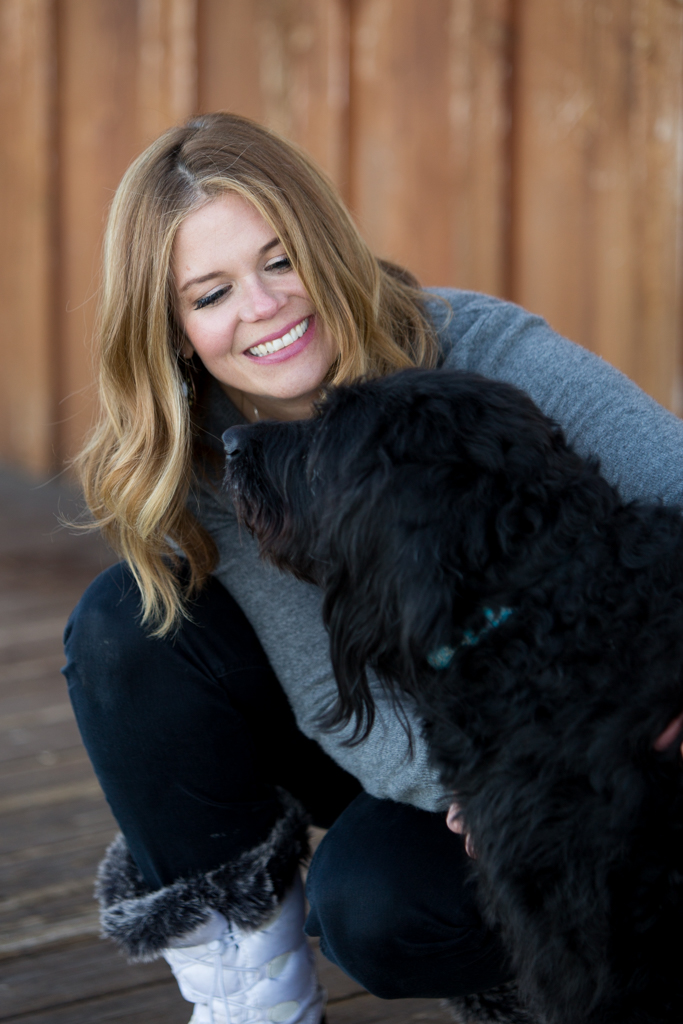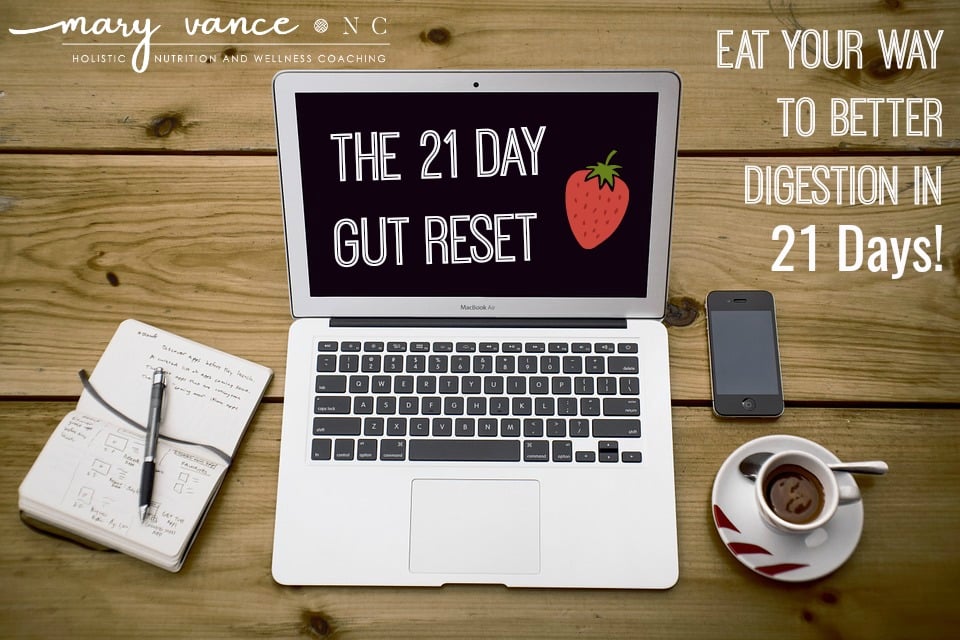If you suspect you have candida overgrowth, you’ve landed in the right place. Not only do I have many articles all about how to get rid of candida (including this one with my free protocol), I also teach a course on the very topic! If you’re delving into a candida protocol, you need to learn the seven foods to ditch on a candida diet.
There is so much confusing info out there on how to treat this fungal overgrowth. And. you’ve probably read that you have to start a very restrictive zero sugar candida diet (I’m rolling my eyes because that is based on faulty science).
And to top it all off, you need to know which foods to eat and what to avoid to support your program. The best anti-candida protocols involve a combo of diet, anti-microbial supplements, and leaky gut healing.
What is Candida?
Candida is a type of yeast that is commonly found both on and in the human body, where it generally causes no problems. It is present in the digestive tract of most, if not all, humans. It’s a commensal part of your microbiome, which is just a fancy way of saying that in normal amounts, it provides needed diversity among the trillions of bacteria in your GI tract. However, it can turn pathogenic under the right circumstances if your immune system can’t keep it in check.
Candida is the most common health issue I help people overcome. I work with women mostly, and their doctors often dismiss their seemingly mild digestive or cognitive symptoms or tell them candida isn’t a real condition. If you have had this experience, please find a doctor who takes your concerns seriously and listens to your symptoms to help you connect the dots. For example, candida is often a culprit in gynecological issues, recurrent UTIs, high blood sugar/diabetes, and even hypothyroidism.
The most common ways candida grows out of control in the gut are antibiotic use, too much sugar, overall poor diet high in refined carbs, alcohol, weakened immune system, and using hormonal birth control. Some medications or diseases, such as diabetes, can also encourage candida overgrowth. Candida overgrowth has a list of symptoms a mile long, but typically it causes recurrent vaginal yeast infections, bloating, itching and skin issues, brain fog, fatigue, poor immune function, sinus issues, alternating constipation and diarrhea, and nail fungus. Depression and anxiety are common with candida overgrowth too. Woman are most susceptible.
The biggest source of confusion I encounter when helping people overcome candida overgrowth is diet; perhaps because everyone’s healing diet looks a bit different due to the fact that we all have different physiological needs. For example, some people will need to ditch starchy root veggies; others may be ok with them. Some people may be able to handle small quantities of legumes, whereas others will experience bloating and gas. But there are a few hard and fast rules about foods to avoid and include from which everyone with candida overgrowth can benefit.
Foods to Ditch if You Have Candida Overgrowth
1. Added sugar: Yeast is a living organism and it needs sugar to proliferate. So it makes sense to cut out all the added sources of sugar in your diet to starve it out, right? Well, not exactly. All carbohydrates break down into sugars in the body, so unless you’re eating a carnivore diet (which I typically don’t recommend), you’re going to be consuming sugar, and that’s fine. Just avoid added sugars. When I say added sugar I mean extra sugar that’s added to foods like baked goods, cereals, junk foods, sodas, protein bars, ketchup, even salad dressing. So make sure to read your labels! Or better yet, stick with foods that don’t have labels. While lower sugar fruits like berries and green apples are fine in moderation, you may need to avoid high sugar tropical fruits. Some people say these higher sugar foods cause their symptoms to flare. Above all, know that sugar alone doesn’t cause candida, and in fact, high FAT diets do.
2. Alcohol: Wine and beer are the biggest alcoholic culprits in candida overgrowth because they are fermented from yeast. Beer contains gluten, which is a gut irritant. But worst of all, the alcohol in beer and wine and any booze is a major source of inflammation in the digestive tract, as it kills your good gut bacteria, allowing bad bacteria to thrive. Inflammation worsens leaky gut and candida. Alcohol also lowers immunity, so ditch the booze during your candida diet.
3. Gluten and preferably all grains: Even if you don’t have a gluten allergy or intolerance, avoid gluten during any gut healing protocol because we know it is a gut irritant and may promote inflammation. Add to that the fact that many people actually do have gluten intolerance or just plain don’t digest it well, and in both scenarios, it is an inflammatory food. I recommend avoiding all grains, because the phytic acids and lectins can also be irritating to a healing digestive tract, especially if you have autoimmune disease. But take heart: You probably won’t have to avoid grains for the rest of your life (unless you so choose).
4. Fermented foods & kombucha: You may be surprised to see fermented foods on this list, because we’ve been told they are high in health-promoting probiotics and enzymes. Candida can feed off fermented foods in some people, so it’s best to avoid ferments until the overgrowth is gone. And kombucha may be especially damaging because it is produced by the same wild fermentation as wine and beer with yeast colonies.
5. Dairy: Like gluten, dairy can be an inflammatory food for many people, meaning it damages the gut lining further (candida also damages the gut lining and exacerbates leaky gut). Dairy may also contribute to gas and bloating.
6. Vinegars: Fermented with grapes or grains, vinegars can feed candida and produce unpleasant histamine reactions in some people. I recommend avoiding all vinegar during your candida program. The exception is apple cider vinegar which is actually anti-fungal and may support detox and healthy blood sugar levels. There’s some evidence that ACV contains enzymes that break down candida.
7. Iffy foods include legumes and potatoes: Typically I recommend everyone avoid grains, legumes, and potatoes (even sweet potatoes) in the intro phase of the candida diet. These foods are all difficult for a compromised gut to break down and may contribute to gas and bloating. Some people may find they do OK with potatoes and sweet potatoes; others will need to exclude entirely. Legumes and grains also have lectins and phytic acids that are further gut irritants. But if you are vegetarian, it’s difficult to get the protein you need without legumes or certain grains, and be aware that soy foods may also cause bloating. Lentils and black beans seem to be easier to digest, and you’ll need to soak any grains you use for better digestibility.
Foods To Include on a Candida Diet
Along with your herbal killing protocol, stock up on these foods that boost your immune health and help kill yeast overgrowth:
- garlic
- apple cider vinegar, (Bragg’s is the only brand I recommend) 1 tbsp in a cup of water 1-2 times daily UNLESS it causes noticeable symptoms for you
- coconut oil
- cruciferous veggies, which help you detox
- hot water with lemon, which is cleansing, good for digestion, and helps you poop when taken first thing in the AM
- anti-inflammatory foods like wild salmon, sardines, wild blueberries, green tea, turmeric
- clove oil may also help kill candida
- pau d’arco tea obviously isn’t a food, but the tea kills candida and bad bacteria
- bone broth & collagen: collagen is a better choice for gut health, but chicken bone broth is excellent for immune health
- freshly grated ginger tea is a great pro-kinetic (makes you poop) and helps combat die-off symptoms
Don’t forget to read my other post on the candida diet.
Want more help kicking candida? Check out the Candida MasterClass which runs three times per year. This is a 6 week course with live Q&As and tons of resources to help you kick candida for good AND heal your gut. Click here for more details, and read past participants’ glowing testimonials!
Pin it!

Mary Vance is a Certified Nutrition Consultant and author specializing in digestive health. She combines a science-based approach with natural therapies to rebalance the body. In addition to her 1:1 coaching, she offers courses to help you heal your gut and improve your health. Mary lives in San Francisco and Lake Tahoe in Northern California. Read more about her coaching practice here and her background here.






